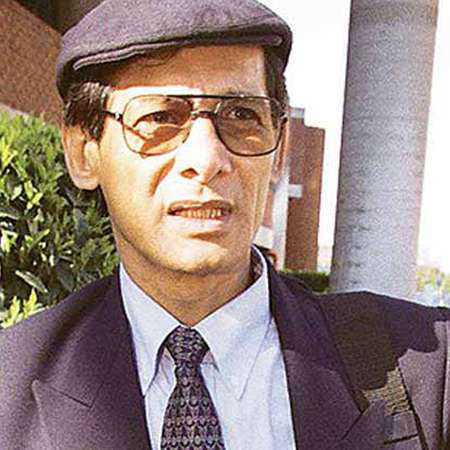Series called ‘The Serpent’ highlights his many murders in Thailand
A new drama series documenting the crimes of Charles Sobhraj, a French- Vietnamese serial killer linked to over 20 murders of mostly young hippies across the world - including Thailand - during the 1970s is about to be screened on Netflix.
Award-winning French actor Tahar Rahim will play Sobhraj in the eight-part series called The Serpent, based on the astonishing true story of how one of the most elusive criminals of the 20th century was caught and finally brought to trial.
Nicknamed ‘The Serpent’ due to his knack for changing his identity and escaping several international prisons, Sobhraj was once deemed Interpol’s most wanted man. In Thailand, he would befriend young hippies and allow them to stay at his apartment in Bangkok, where they were fatally drugged. Their bodies were later disposed of in Pattaya and other still unknown locations.
Sobhraj was interrogated by Thai police in connection with the murders, including two Dutch students, but apparently released because of possible collateral damage to the country's tourist industry.
Meanwhile, Dutch diplomat Herman Knippenberg who had been investigating the case was given police permission to search Sobhraj's Bangkok apartment, a full month after the suspect had left the country. Knippenberg found evidence, including victims' documents and passports, as well as poisons and syringes.
Sobhraj was eventually jailed in India twice – the second time deliberately to avoid extradition to Thailand - before settling in France. On a visit to Nepal, he was recognized and arrested. To this day, the 75-year-old remains in prison in Kathmandu.
Award-winning French actor Tahar Rahim will play Sobhraj in the eight-part series called The Serpent, based on the astonishing true story of how one of the most elusive criminals of the 20th century was caught and finally brought to trial.
Nicknamed ‘The Serpent’ due to his knack for changing his identity and escaping several international prisons, Sobhraj was once deemed Interpol’s most wanted man. In Thailand, he would befriend young hippies and allow them to stay at his apartment in Bangkok, where they were fatally drugged. Their bodies were later disposed of in Pattaya and other still unknown locations.
Sobhraj was interrogated by Thai police in connection with the murders, including two Dutch students, but apparently released because of possible collateral damage to the country's tourist industry.
Meanwhile, Dutch diplomat Herman Knippenberg who had been investigating the case was given police permission to search Sobhraj's Bangkok apartment, a full month after the suspect had left the country. Knippenberg found evidence, including victims' documents and passports, as well as poisons and syringes.
Sobhraj was eventually jailed in India twice – the second time deliberately to avoid extradition to Thailand - before settling in France. On a visit to Nepal, he was recognized and arrested. To this day, the 75-year-old remains in prison in Kathmandu.
Horror of expat lady who discovered she was living in Sobhraj’s evil den in Bangkok
By Ken Barrett
In 1981 I had been brought out from London to Bangkok by a local publisher, and hadn’t been here long before a British girl, Sarah, was recruited as the publisher’s marketing manager. She took an apartment in a 1950s block on Bangkok’s Saladaeng Road. The block, which was somewhat shabby but still respectable, stood on a corner site and consisted of two five-storey wings with a small swimming pool to the front.
Sarah lived alone, and the moment she moved in she felt uneasy in the place. There was no reason she could identify, she told me; there was just something that wasn’t right. And there was the strange fact that the cleaners would not enter the apartment.
Looking around the office one day for some reading material, Sarah found a book written by Richard Neville, entitled The Life and Crimes of Charles Sobhraj, which had been published a couple of years previously. Taking it home to her apartment, she began reading.
She reached the point, about halfway through the book, where Neville describes Sobhraj’s arrival in Bangkok. He had rented an apartment in Kanit House. That was the name of this apartment block. The apartment number was 504. This very same apartment.
Neville had himself actually been to the apartment when researching for the book, and he described the place in detail, right down to the kitchenette with its padded vinyl bar, the liver coloured rubber floor tiling, and the bamboo furniture. He had also been meticulous in reconstructing the events that had taken place in the rooms in which she now lived.
Lying on her bed late in the evening, Sarah read on about the doping and poisoning that had taken place in these rooms, and the young people who had been taken away and strangled or stabbed, and their bodies doused in petrol and set alight. She began to feel sick with horror.
After a sleepless night, and this being the weekend, Sarah went down to the pool where she got talking to another Kanit House resident, an American former helicopter pilot and his Thai girlfriend. The pilot said that, yes, that had been Sobhraj’s apartment. His girlfriend said there was a ghost in the place, and she refused to go inside.
That same day, Sarah fled the apartment, and arrived at the small house I had in nearby Soi Ruam Rudee, declaring in tears that she could not stay in the place for another night. My mae bahn made up a bed for her on the sofa, and she stayed the night. As luck would have it there was an empty house in my compound. She moved in the next day.
I went with her to the apartment to help clear out her possessions. There was a balcony running the length of the building, with the apartment at the far end, and it seemed to be in permanent shade. Inside, there was a dankness; something gloomy. I certainly would not have wanted to stay there myself.
Kanit House was still standing when I moved back to Bangkok in 1994, although by this time it was empty and shuttered. Soon after, it was pulled down. A smart condominium block called (and doubtless with no irony intended) The Legend now stands in its place.
Sarah lived alone, and the moment she moved in she felt uneasy in the place. There was no reason she could identify, she told me; there was just something that wasn’t right. And there was the strange fact that the cleaners would not enter the apartment.
Looking around the office one day for some reading material, Sarah found a book written by Richard Neville, entitled The Life and Crimes of Charles Sobhraj, which had been published a couple of years previously. Taking it home to her apartment, she began reading.
She reached the point, about halfway through the book, where Neville describes Sobhraj’s arrival in Bangkok. He had rented an apartment in Kanit House. That was the name of this apartment block. The apartment number was 504. This very same apartment.
Neville had himself actually been to the apartment when researching for the book, and he described the place in detail, right down to the kitchenette with its padded vinyl bar, the liver coloured rubber floor tiling, and the bamboo furniture. He had also been meticulous in reconstructing the events that had taken place in the rooms in which she now lived.
Lying on her bed late in the evening, Sarah read on about the doping and poisoning that had taken place in these rooms, and the young people who had been taken away and strangled or stabbed, and their bodies doused in petrol and set alight. She began to feel sick with horror.
After a sleepless night, and this being the weekend, Sarah went down to the pool where she got talking to another Kanit House resident, an American former helicopter pilot and his Thai girlfriend. The pilot said that, yes, that had been Sobhraj’s apartment. His girlfriend said there was a ghost in the place, and she refused to go inside.
That same day, Sarah fled the apartment, and arrived at the small house I had in nearby Soi Ruam Rudee, declaring in tears that she could not stay in the place for another night. My mae bahn made up a bed for her on the sofa, and she stayed the night. As luck would have it there was an empty house in my compound. She moved in the next day.
I went with her to the apartment to help clear out her possessions. There was a balcony running the length of the building, with the apartment at the far end, and it seemed to be in permanent shade. Inside, there was a dankness; something gloomy. I certainly would not have wanted to stay there myself.
Kanit House was still standing when I moved back to Bangkok in 1994, although by this time it was empty and shuttered. Soon after, it was pulled down. A smart condominium block called (and doubtless with no irony intended) The Legend now stands in its place.



 RSS Feed
RSS Feed
















